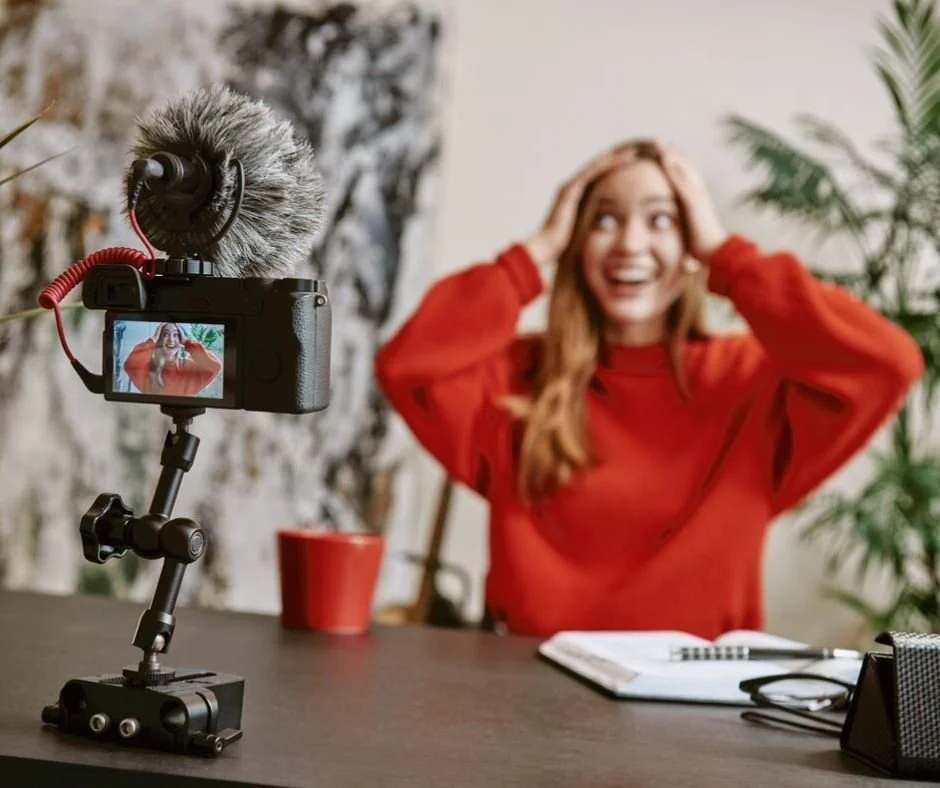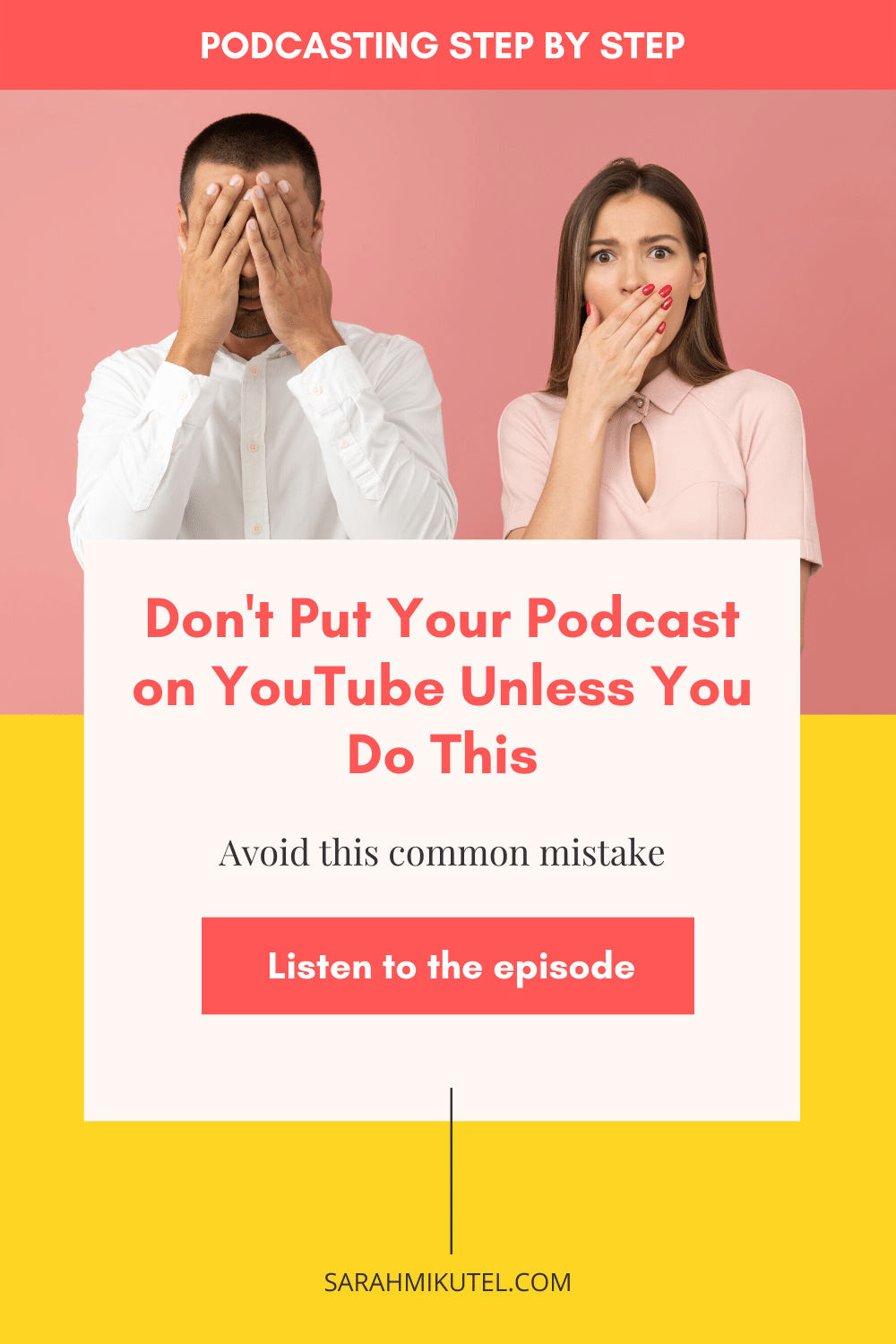Don't Put Your Podcast on YouTube Unless You Do This
As podcasters, we want to do what we can to help people discover and listen to our show. This means being in all the podcast directories, like Apple Podcasts, but should we be on YouTube, as well? On Podcasting Step by Step, I dig into why this can hurt us if we do it the wrong way, and how to use YouTube right.
Subscribe to Podcasting Step by Step for free to hear how YouTube can help you grow your podcast audience, and what you definitely should not do on YouTube.
Several podcast hosts let you automatically publish your podcast episodes to your YouTube channel. While that might sound like a nice marketing bonus, I would not do this.
People go to YouTube to watch videos, and there’s a good chance they’ll get annoyed when they hit play and just get audio and a static image.
Now, some podcasters might say, “People can listen on YouTube while they’re doing other things.” Well, maybe. I don’t actually know anyone who does that. Do you?
Data supports people don’t want to listen to your show on YouTube
Daniel J. Lewis from The Audacity to Podcast calls audio-only YouTube uploads ‘fake video,’ including audiograms (static images with sound waves that move in sync with the audio).
These fake videos might have thousands of views, but this is deceiving. According to Daniel’s research, “most fake videos lose 90–95% of the audience within only 90 seconds.”
They showed up for a video but only got audio, so they left right away and this is going to hurt your rankings on YouTube. The abandonment rate tells the YouTube algorithm that your content isn’t worth watching. Also, fake videos don’t get a lot of likes, comments, or subscribes, which are all things YouTube considers when ranking videos.
If you start posting real videos, YouTube might not be keen to share them because your channel has the reputation for low-engagement and high abandonment, and YouTube wants people to stay on their platform.
How YouTube can help podcasters
Podcasters can use YouTube to grow their audience by creating real videos.
You could video record the interviews you do, or go ‘live’ on a social platform and upload that video. Another idea is to video yourself offering some top tips from your show and then pointing people to your podcast for even more great content.
For example, you could do a video on “5 Tips to DeClutter Your House in a Weekend.” Share those tips and then say ‘to hear five more,’ or, ‘for more great tips to de-stress your life, subscribe to the XYZ podcast for free. Links (to your website) can be found in the description below.’ Tease some value. Answer questions.
How to rank in YouTube
Even if you create amazing videos, it doesn’t mean that people are going to discover you. Here are some tips on how to rank in YouTube:
Make videos that are five minutes or longer
YouTube wants to keep people on its site, so it ranks longer videos better as long as people stay on the site and watch them (you won’t rank if you post a 20-minute video but people leave after 30 seconds). So how do you hook your audience and get them to stay?
Follow Brian Dean's PPP Formula
Brian Dean, founder of Backlinko, runs all sorts of tests to find out what actually moves the needle when it comes to ranking in YouTube. He has more than 247,000 subscribers to his channel, on which he shared his PPP formula:
Preview - Get right to the point of your video. Within the first 15 seconds, viewers should know what they’re going to get.
Proof - Who are you? Why are you qualified to be talking about this?
Preview - Tell people what they’ll learn in a slightly different way, give an example or go deeper in some way.
Another great tip Brian gives is to have a really specific call to action at the end of the video. Ask them a question and tell them to write the answer in the comments.
YouTube SEO
What is your ideal listener searching for on YouTube? Use relevant keywords in your video title, with the most import word or phrase at the beginning, and in your description and tags for the video. VidIQ shows you what videos are doing well and what tags people are using, including your competitors. Check out the tags of videos similar to yours that are doing well and use those same tags.
Also use keywords specific to your show that you’ll use across all your videos so that if someone watches one of your videos, more will appear as suggestions in the sidebar.
Create thumbnails that pop
You want people to click on and engage with your videos, but how do you get them to click in the first place? In addition to using a title with the right keywords, use a thumbnail that will grab attention.
The thumbnail is the still image for your video that shows up in search. You may have noticed that in a lot of these thumbnails, people are making dumb faces or have big, bold text. This is to set themselves apart from similar videos and get you to choose them.
Tell people about your video
The first 24 hours after publishing your video are crucial. Share on social. Let your email list know there’s a new video. Ask viewers to like and comment. The more likes and comments you get, the higher your video will rank.
This means you have to have comments enabled. This gives a lot of people -- most people? -- angst because YouTube can be a vicious place. You could create the perfect, most life-changing video, and a troll will still hate on you for no reason.
Any kind of comment counts toward engagement, so that troll could help boost your rankings. But if you want, you can set up your YouTube channel so that comments are moderated before they go live.
To sum all this up
You definitely do not have to be on YouTube. I would focus on your podcast if you’re just starting out. One thing at a time.
But if you want to be on YouTube, post real videos and not fake ones. You only have so many hours in a day, so spend them on what you enjoy and on what you and others find value in -- not on YouTube vids that people abandon after a few seconds.






